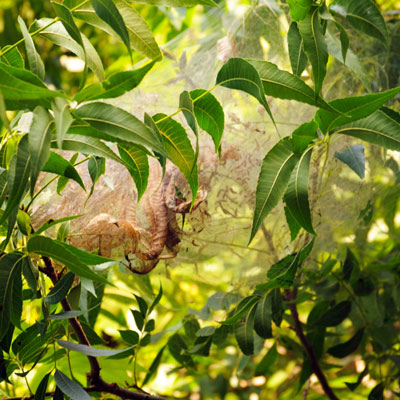Question of the Week Number 1: July 13, 2017
“Neil, what can I do to control webworms that are all over my pecan tree?”
I did 20 minutes of Web searching to find a link that really stated the case on homeowner control of this common pest. I didn’t find one that really got me excited, so let me just summarize what I read from a whole host of state universities.
• Fall webworms attack a large number of species, first and foremost pecans, walnuts, persimmons, mulberries and sweetgums.
• This is called “fall webworm,” but there can be three or four generations per year in a state as large as Texas, and they can start showing up as early as spring in South Texas.

Photo: Fall webworm populations are exploding like July 4 fireworks all across Texas.
• Most common time for their appearance is now through mid-fall.
• They begin their web formations on the outermost leaves of a branch. Eastern tent caterpillars, another common web-builder, by comparison, form their webs beginning in the crotches of branches.
• Because most webworm feeding is done from mid-summer on, trees have already done most of their growing and have stored a great deal of food reserve. Translated, that means that webworms are mainly cosmetic. They rarely threaten the lives of the host trees.
• The easiest way to eliminate them is to break open the web so that birds can feed on the larvae.
• I prefer to watch for them from late May on and clip the tiny webs off with a long-handled pole pruner as soon as I see them starting to form. Left in place for even a few days the webs can quickly grow too large to be removed by pruning.
• Spraying is difficult because (1) it’s hard to reach high into tall trees and (2) the webs are hydrophobic, that is, they repel water. Most general-purpose insecticides as well as Bacillus thuringiensis biological worm spray will kill webworms, but you will need to include one drop of liquid dishwashing detergent with the spray to break the surface tension of the webs and allow the spray to penetrate and make contact with the larvae.
• Those webs that are too high to spray or prune will fall to the ground as the trees lose their leaves this winter.
